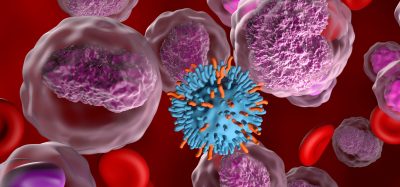T-cell regulator SLAMF6 may be hindering immunotherapy success
Posted: 5 March 2020 | Mandy Parrett (Drug Target Review) | No comments yet
A new study conducted in Israel suggests that T cells’ ability to destroy skin cancer increases in the absence of T-cell regulators called SLAMF6.


T cells are a type of lymphocyte that perform a core defensive function in our bodies’ immune systems. Some immunotherapies are designed to boost their capacity to detect and destroy cancer cells and, while this proves to be an effective approach for many, there is an equal number for which such treatment is unsuccessful.
Signalling lymphocytic activation molecules (SLAM) are a family of genes that group together in the process of cellular adhesion, enabling them to bind to other cells. The activity of SLAMF6 has been previously linked to other diseases, such as Bare Lymphocyte Syndrome Type 1, but this new research reveals that immunotherapies that turn off SLAMF6 might be more effective options – either alone or in conjunction with other treatments – for cancer.
“There is a real need to find new targets for immunotherapies,” says lead author Emma Hajaj, an MD-PhD candidate at the Sharett Institute of Oncology at Hadassah Hebrew University Hospital, Jerusalem, Israel. “We thought that SLAMF6, which is a receptor found on all T cells, was a good candidate for immunotherapy, but more thorough research was needed to confirm this.”
To better understand the role of SLAMF6 in cancer, Hajaj and her colleagues created a mouse model to assess the molecule’s impact in melanoma treatment. They found that tumours in mice treated with SLAMF6-lacking T cells shrunk faster and stayed smaller than tumours in mice treated with typical T cells.
Additionally, they witnessed the expression of a gene called LAG-3 increased in the SLAMF6-lacking cells, possibly to make up for the loss of the regulator. Combining SLAMF6-lacking T cells with an antibody that blocks LAG-3 also increased their tumour-shrinking effect.
“The results from our study show that the absence of SLAMF6 unleashes powerful anti-tumour T cells, which extended survival in our mouse model,” explains senior author Michal Lotem, Head of the Center for Melanoma and Cancer Immunotherapy at Hadassah Hebrew University Hospital. “These findings may have important implications for cancer immunotherapy and could lead to the development of new melanoma treatments that turn off SLAMF6.”
The study was published in eLife.
Related topics
Analysis, Immunotherapy, Oncology, Research & Development, T cells, Targets
Related conditions
Bare Lymphocyte Syndrome Type 1, Melanoma, Skin cancer
Related organisations
Center for Melanoma and Cancer Immunotherapy, eLife, Hadassah Hebrew University Hospital, Sharett Institute of Oncology
Related people
Emma Hajaj, Michal Lotem








